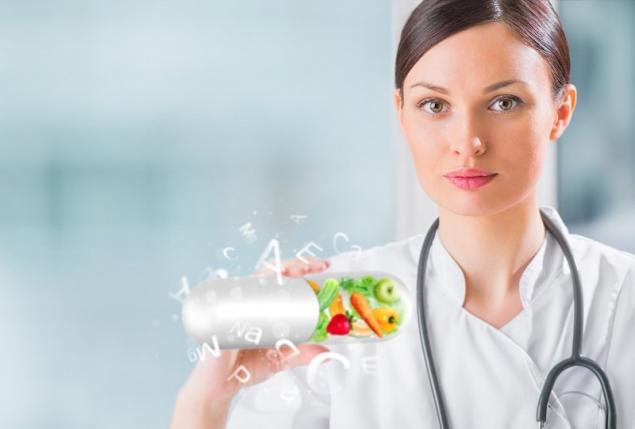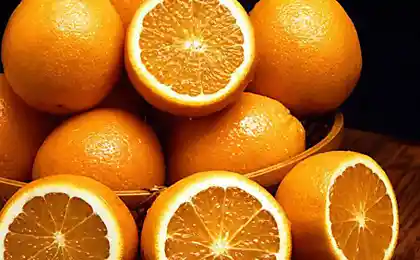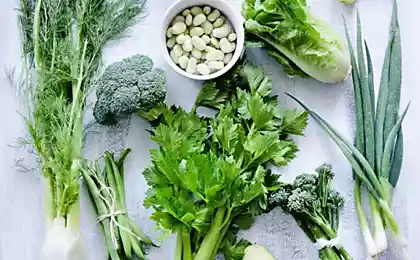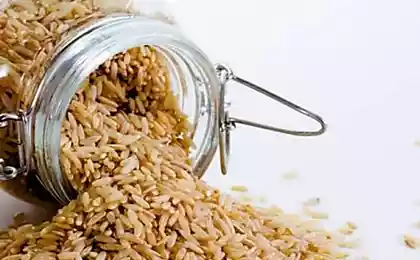222
Why you should not eat porridge with meat
We all know that the nutrients and vitamins contained in foods provide the human body with the necessary energy, give it strength for life and development, and help resist diseases.

Why is it that when we try to buy only the healthiest foods, we often lose important nutrients? It is very simple: some components of food (dietists called them antinutrients) interfere with the absorption of vitamins and minerals, as a result of which food does not benefit us.

"Site" will tell you how to get the most nutrients from food and what features of iron, calcium and vitamins should be paid attention to.
Assimilation of products AntinutrientsAntinutrients, or antinutrients, are an integral part of many foods, do not have toxicity, but are able to disrupt the absorption of nutrients necessary for a person. Scientists divided them into three groups: antienzymes, antivitamins and demineralizing substances.

Antienzymes are found in raw legumes, wheat, barley and egg white. Their action disrupts the activity of digestive enzymes (pepsin, trypsin, amylase). As a result, some of the food eaten is not digested or absorbed.

Antivitamins include substances that either reduce or completely eliminate the effect of vitamins. Demineralizing substances include oxalic acid, phytin, tannins, which form complexes with mineral substances and prevent their absorption.
Assimilation of iron: phytic acid against vitamin C Ascorbic acid form with iron soluble compounds that are rapidly absorbed in the digestive tract. Therefore, the combination of meat products with a salad of fresh or sauerkraut vegetables is the best in terms of iron absorption.

With the combined use of vitamin C and plant sources of iron, the absorption of the latter can be increased by 6 times! This effect is possible due to the property of ascorbic acid to block phytins that prevent the absorption of iron. Remember that there are products that reduce bioavailability of iron.
Products that block the absorption of iron
For better absorption of iron, you should not wash down meat dishes (the main sources of easily digestible heme iron) with milk, strong tea or combine them with porridge and spinach salad. Of the animal products rich in iron, the liver and tongue can be distinguished. In terms of iron content, they are significantly superior to other products.

It is worth noting that 100 grams of beef tongue is 1.5 times more than the daily norm of the main hematopoietic vitamin B12, which is important for the prevention of iron deficiency anemia, and contains up to 40% of the daily norm of zinc, which directly contributes to the formation of hemoglobin.
The main sources of calcium are milk and dairy products (especially cottage cheese, kefir, cheese and sour cream), salmon, and from plant products - sesame, olives, cabbage, figs, cauliflower, garlic, celery, parsley, almonds, pistachios, strawberries and cherries.

The absorption of calcium in the intestine improves under the influence of citric acid (it is rich in citrus and forest berries) and vitamin D, the lack of which leads to the depletion of calcium stores in the bones, osteoporosis and deterioration of teeth, hair and nails.

It should be remembered that products containing tannins (cola, coffee, tea, cocoa) and oxalic or phytic acid (nuts, cereals, spinach, sorrel), slow down the absorption of calcium. So, one small cup of coffee inhibits its absorption for 3 hours.
Calcium is also worse absorbed along with bread, starch, bran and edible salt. So if you drink vitamins with calcium, try to eat less bread and salty foods.
Assimilation of vitamin C: cucumbers against tomatoes Man does not have the ability to synthesize vitamin C and must systematically consume it with food. The need of an adult in vitamin C corresponds to 50-100 milligrams per day. These figures should be increased in cases of exposure to severe stress, illness, high physical activity.

The main sources of ascorbic acid are rosehip, red sweet pepper, sea buckthorn, kiwi, black currant, parsley, cabbage (especially sauerkraut), strawberries, lemons, oranges, horseradish.

The enzyme ascorbinase has the property of reducing the bioavailability of vitamin C. This antivitamin accelerates the oxidation of ascorbic and is found in zucchini, cucumbers, cabbage and in the skin of many berries. Therefore, a salad of tomatoes (rich in vitamin C) and cucumbers (which contain ascorbinase) will not bring you as much vitamin C as the tomatoes alone could.

Given that ascorbic is destroyed by boiling, it is best to make drinks from rosehip and other fruits rich in vitamin C, in the following way: not cook, but pour boiling water crushed fruits and insist in a thermos.
Even foods that are considered useful can be harmful. For example, if you make them too unbalanced diet. How it happens, said dietitian Alexei Kovalkov.
Many people are trying to lose weight. To do this, come up with a variety of ways, look for the most sophisticated methods. But that’s not what you really need. We talk about the ideal diet for women weighing 75 to 85 kg!
Everyone who loses weight needs to know that there are a number of foods that help burn fat. Adding them to the diet in the spring will be the right decision!

Why is it that when we try to buy only the healthiest foods, we often lose important nutrients? It is very simple: some components of food (dietists called them antinutrients) interfere with the absorption of vitamins and minerals, as a result of which food does not benefit us.

"Site" will tell you how to get the most nutrients from food and what features of iron, calcium and vitamins should be paid attention to.
Assimilation of products AntinutrientsAntinutrients, or antinutrients, are an integral part of many foods, do not have toxicity, but are able to disrupt the absorption of nutrients necessary for a person. Scientists divided them into three groups: antienzymes, antivitamins and demineralizing substances.

Antienzymes are found in raw legumes, wheat, barley and egg white. Their action disrupts the activity of digestive enzymes (pepsin, trypsin, amylase). As a result, some of the food eaten is not digested or absorbed.

Antivitamins include substances that either reduce or completely eliminate the effect of vitamins. Demineralizing substances include oxalic acid, phytin, tannins, which form complexes with mineral substances and prevent their absorption.
Assimilation of iron: phytic acid against vitamin C Ascorbic acid form with iron soluble compounds that are rapidly absorbed in the digestive tract. Therefore, the combination of meat products with a salad of fresh or sauerkraut vegetables is the best in terms of iron absorption.

With the combined use of vitamin C and plant sources of iron, the absorption of the latter can be increased by 6 times! This effect is possible due to the property of ascorbic acid to block phytins that prevent the absorption of iron. Remember that there are products that reduce bioavailability of iron.
Products that block the absorption of iron
- Nuts, seeds, legumes, cereals, and some vegetables contain phytic acid and its salts — phytates that bind calcium, magnesium, iron and zinc in the digestive tract, reducing their absorption by the body.
- All types of tea contain polyphenols, in particular tannin, which prevents the absorption of iron.
- Sorrow and spinach contain oxalates and phosphates that disrupt iron absorption.
- Milk, which is rich in calcium, and calcium preparations form compounds with iron, the absorption of which is difficult.
For better absorption of iron, you should not wash down meat dishes (the main sources of easily digestible heme iron) with milk, strong tea or combine them with porridge and spinach salad. Of the animal products rich in iron, the liver and tongue can be distinguished. In terms of iron content, they are significantly superior to other products.

It is worth noting that 100 grams of beef tongue is 1.5 times more than the daily norm of the main hematopoietic vitamin B12, which is important for the prevention of iron deficiency anemia, and contains up to 40% of the daily norm of zinc, which directly contributes to the formation of hemoglobin.
The main sources of calcium are milk and dairy products (especially cottage cheese, kefir, cheese and sour cream), salmon, and from plant products - sesame, olives, cabbage, figs, cauliflower, garlic, celery, parsley, almonds, pistachios, strawberries and cherries.

The absorption of calcium in the intestine improves under the influence of citric acid (it is rich in citrus and forest berries) and vitamin D, the lack of which leads to the depletion of calcium stores in the bones, osteoporosis and deterioration of teeth, hair and nails.

It should be remembered that products containing tannins (cola, coffee, tea, cocoa) and oxalic or phytic acid (nuts, cereals, spinach, sorrel), slow down the absorption of calcium. So, one small cup of coffee inhibits its absorption for 3 hours.
Calcium is also worse absorbed along with bread, starch, bran and edible salt. So if you drink vitamins with calcium, try to eat less bread and salty foods.
Assimilation of vitamin C: cucumbers against tomatoes Man does not have the ability to synthesize vitamin C and must systematically consume it with food. The need of an adult in vitamin C corresponds to 50-100 milligrams per day. These figures should be increased in cases of exposure to severe stress, illness, high physical activity.

The main sources of ascorbic acid are rosehip, red sweet pepper, sea buckthorn, kiwi, black currant, parsley, cabbage (especially sauerkraut), strawberries, lemons, oranges, horseradish.

The enzyme ascorbinase has the property of reducing the bioavailability of vitamin C. This antivitamin accelerates the oxidation of ascorbic and is found in zucchini, cucumbers, cabbage and in the skin of many berries. Therefore, a salad of tomatoes (rich in vitamin C) and cucumbers (which contain ascorbinase) will not bring you as much vitamin C as the tomatoes alone could.

Given that ascorbic is destroyed by boiling, it is best to make drinks from rosehip and other fruits rich in vitamin C, in the following way: not cook, but pour boiling water crushed fruits and insist in a thermos.
Even foods that are considered useful can be harmful. For example, if you make them too unbalanced diet. How it happens, said dietitian Alexei Kovalkov.
Many people are trying to lose weight. To do this, come up with a variety of ways, look for the most sophisticated methods. But that’s not what you really need. We talk about the ideal diet for women weighing 75 to 85 kg!
Everyone who loses weight needs to know that there are a number of foods that help burn fat. Adding them to the diet in the spring will be the right decision!
Durable, clear fabric printing from a company that combines production and design services
Should I go on a diet?
























